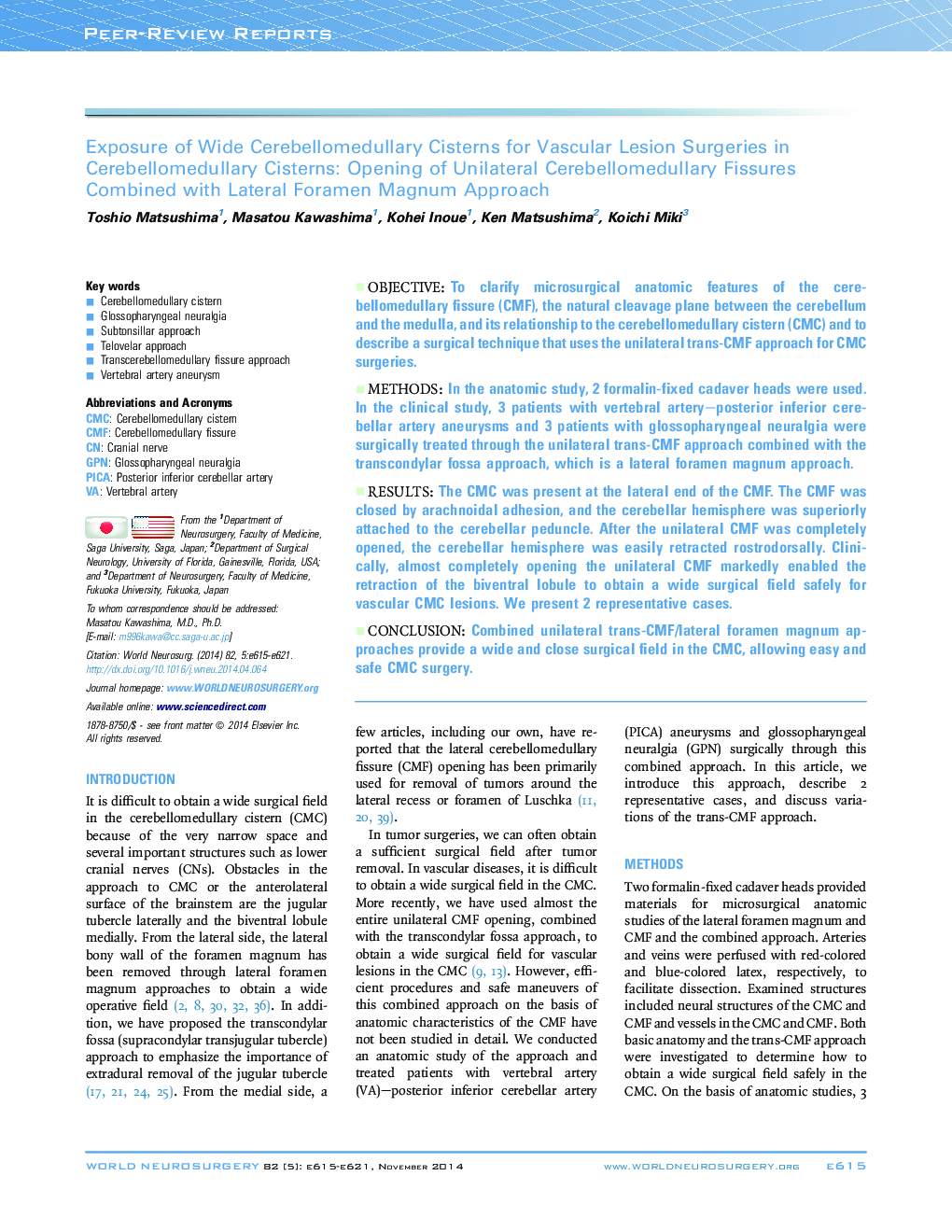| Article ID | Journal | Published Year | Pages | File Type |
|---|---|---|---|---|
| 3095358 | World Neurosurgery | 2014 | 7 Pages |
ObjectiveTo clarify microsurgical anatomic features of the cerebellomedullary fissure (CMF), the natural cleavage plane between the cerebellum and the medulla, and its relationship to the cerebellomedullary cistern (CMC) and to describe a surgical technique that uses the unilateral trans-CMF approach for CMC surgeries.MethodsIn the anatomic study, 2 formalin-fixed cadaver heads were used. In the clinical study, 3 patients with vertebral artery–posterior inferior cerebellar artery aneurysms and 3 patients with glossopharyngeal neuralgia were surgically treated through the unilateral trans-CMF approach combined with the transcondylar fossa approach, which is a lateral foramen magnum approach.ResultsThe CMC was present at the lateral end of the CMF. The CMF was closed by arachnoidal adhesion, and the cerebellar hemisphere was superiorly attached to the cerebellar peduncle. After the unilateral CMF was completely opened, the cerebellar hemisphere was easily retracted rostrodorsally. Clinically, almost completely opening the unilateral CMF markedly enabled the retraction of the biventral lobule to obtain a wide surgical field safely for vascular CMC lesions. We present 2 representative cases.ConclusionCombined unilateral trans-CMF/lateral foramen magnum approaches provide a wide and close surgical field in the CMC, allowing easy and safe CMC surgery.
